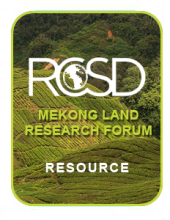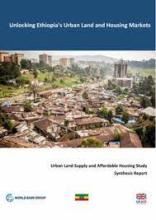Land Library
Welcome to the Land Portal Library. Explore our vast collection of open-access resources (over 74,000) including reports, journal articles, research papers, peer-reviewed publications, legal documents, videos and much more.
/ library resources
Showing items 19 through 27 of 4951.ABSTRACTED FROM EXECUTIVE SUMMARY: This research analyses the ways in which current changes in land tenure, agrarian and socio-economic systems are reshaping resource allocations and transfers within households in indigenous communities in Ratanakiri Province, Cambodia.
Land use models play an important role in exploring future land change dynamics and are instrumental to support the integration of knowledge in land system science.
Armed conflicts create drastic socioeconomic shocks that lead to land use and land cover changes in ways that are not yet well understood. Several studies have used satellite imagery to detect such changes during periods of conflict.
Ethiopia’s rapidly growing urban centers are facing an unprecedented level of demand for urban land
and housing. How can Ethiopia supply urban land in an efficient and equitable fashion to accommodate
This note is part of an Action Notes series and provides guidance for governments and companies on examples to follow to engage youth in participating in agriculture.
The Annual Country Reviews reflect upon current land issues in the Mekong Region, and has been produced for researchers, practitioners and policy advocates operating in the field.
ABSTRACTED FROM LA VIA CAMPESINA PRESS RELEASE: The UN Declaration aims to better protect the rights of all rural populations including peasants, fisherfolks, nomads, agricultural workers and indigenous peoples and to improve living conditions, as well as to strengthen food sovereignty, the fight
The government of (post)socialist Laos has conceded more than 1 million hectares of land—5 percent of the national territory—to resource investors, threatening rural community access to customary lands and forests.
Land cover data is widely used for the design and monitoring of land use policies despite the incapability of this type of data to represent multiple land uses and land management activities within the same landscape.




